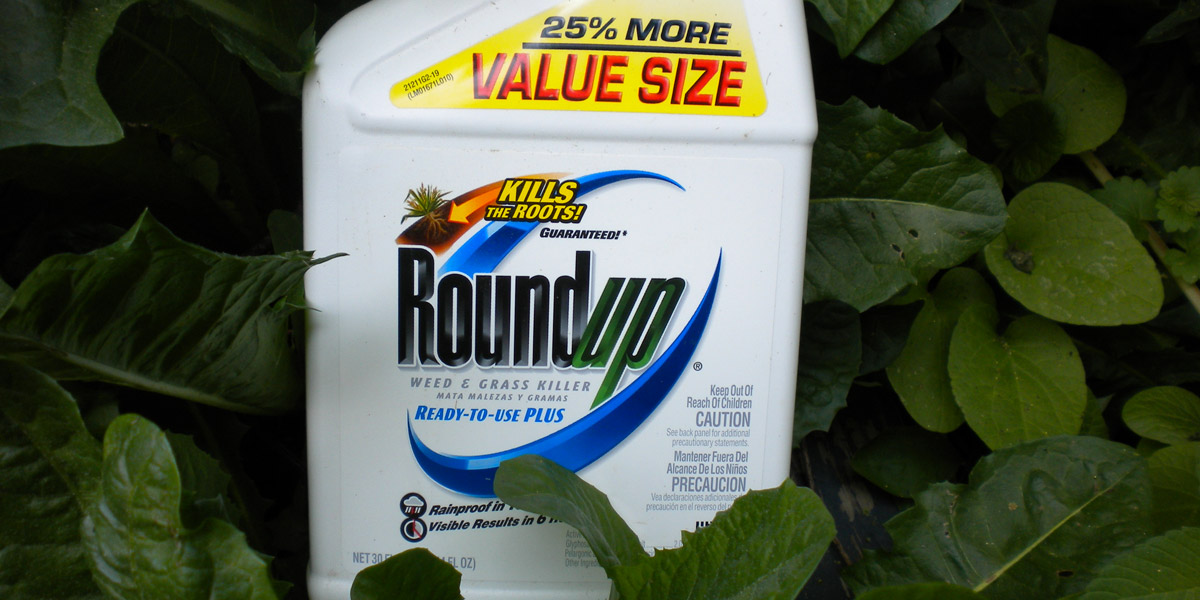
Claims that glyphosate can cause disorders from autism to asthma are not scientifically supported, say researchers
Many experts have concerns about glyphosate. But two authors, Anthony Samsel and Stephanie Seneff, have gone further than most. While they have not published any original experimental research on the toxicity of the herbicide, they have published a series of commentaries linking glyphosate exposure to a wide range of chronic diseases, including cancers, diabetes, autism, obesity, asthma, infections, osteoporosis, infertility, and birth defects.
The commentaries have been cited by some campaigners against GMOs and associated pesticides.
Now an article has been published that challenges some of the claims made in these commentaries. The article, authored by Dr Robin Mesnage and Dr Michael Antoniou of King's College London, controversially concludes that Samsel and Seneff’s claims "are not supported by the available scientific evidence. Thus, the mechanisms and vast range of conditions proposed to result from glyphosate toxicity presented by Samsel and Seneff in their commentaries are at best unsubstantiated theories, speculations, or simply incorrect."
The article seems guaranteed to spark disagreement among campaigners. Some have already suggested that its authors must be on Monsanto’s payroll. So GMWatch asked Dr Michael Antoniou to explain the thinking behind its publication.
GMW: Why did you write this article?
 MA: The five commentaries of Samsel and Seneff that we address in our article claim that glyphosate can through various mechanisms lead to an extraordinarily wide range of disease conditions. If these mechanisms were shown to be valid, they would have major ramifications regarding public health.
MA: The five commentaries of Samsel and Seneff that we address in our article claim that glyphosate can through various mechanisms lead to an extraordinarily wide range of disease conditions. If these mechanisms were shown to be valid, they would have major ramifications regarding public health.
Given the intense and growing concerns that people have about the safety of glyphosate, these commentaries have attracted a great deal of attention. However, if the hypotheses of Samsel and Seneff linking glyphosate exposure to this large number of diseases are not supported by the scientific evidence, then people are clearly being misled. It is important that those with concerns base their arguments on reliable evidence.
We therefore wanted to test whether their hypotheses held up to scrutiny in light of the available scientific evidence on glyphosate's toxicity and its mechanisms of action.
On one hand, that a single compound could cause such a diverse range of diseases might seem hardly credible, especially since human populations are exposed to hundreds of toxic chemicals daily. On the other hand, we don't know everything there is to know about the mechanisms of toxicity of glyphosate herbicides. So in our article we approached Samsel and Seneff's reasoning with an open mind, as they could well have identified novel mechanisms of action. We looked at the scientific evidence to see whether it supported their claims linking glyphosate to this plethora of conditions.
GMW: What did you find?
MA: Samsel and Seneff principally used a logistic structure known as syllogism to arrive at their conclusions. A syllogism is when two or more propositions are used in order to generate a conclusion. Although of value when used appropriately, the incorrect application of syllogism leads to false conclusions. Frequently quoted examples are “All men are mortal, Socrates is a man, therefore Socrates is mortal,” which constitutes a meaningful syllogism. But “All cats are mortal, Socrates is mortal, therefore Socrates is a cat” is clearly a syllogism fallacy!
One of Samsel and Seneff's main hypotheses is that the amino acid glycine is substituted by glyphosate in the protein amino acid sequence in living organisms. They reason that such a substitution would result in proteins being misfolded and thus either lose their normal function or acquire new ones that are detrimental to the functioning of the cell.
However, the evidence they provide in support of this assertion is neither conclusive nor convincing. On the contrary, there is evidence to show that glyphosate does not substitute for glycine in the amino acid sequence. A study shows that when bacteria are grown in the presence of glyphosate and their proteins are analysed, no evidence of glyphosate incorporation is detected. Therefore Samsel and Seneff's hypothesis is not supported by the available evidence and is incorrect.
GMW: Are there other examples of conclusions that you believe to be wrong?
MA: Samsel and Seneff's other claims of glyphosate disease causation are based on the known properties of glyphosate and studies showing negative health impacts in animal or cell models. Using the logistic method of syllogism, Samsel and Seneff arrive at their conclusions of links between glyphosate and various diseases. For example, it is known that glyphosate is a strong metal chelator (i.e. it binds metals) and as such it can bind manganese. Manganese deficiency is linked with a number of illnesses, so Samsel and Seneff conclude that glyphosate causes these diseases.
However, there is no evidence showing that glyphosate can disturb manganese homeostasis in humans at typical levels of exposure. The only evidence that Samsel and Seneff provide to support their hypothesis that glyphosate's chelation of manganese leads to a wide spectrum of diseases is a study in dairy cows by Kruger and colleagues.
In this study, an investigation of blood biochemistry revealed damage to liver, kidney and muscle tissues and the degree of severity of this damage correlated with levels of glyphosate in the animals' urine. In addition, these animals were found to have extremely low levels of cobalt and manganese, which may have contributed to the organ dysfunction. But there was no correlation between the manganese levels measured in blood and the levels of glyphosate in urine. Thus it is not possible to conclude that the glyphosate was a direct cause of the manganese and cobalt deficiency.
An equally valid reason for the lack of available manganese in the dairy cows is the finding that application of glyphosate-based herbicides to soybeans can lead to manganese deficiency in the plants. This in turn could lead to manganese deficiency in animals or humans that consume the plants.
The amount of glyphosate consumed by farm animals will be far greater than human consumption because animal feed has higher levels than human food. Thus results from farm animal studies on glyphosate's effects on nutrient metal homeostasis cannot be extrapolated to people.
GMW: Are you saying glyphosate herbicides are safe?
MA: We are certainly not saying that glyphosate herbicides are safe and there is reliable evidence that suggests they are not. For example, according to the World Health Organisation’s cancer research agency IARC, there is “sufficient” evidence that glyphosate causes cancer in laboratory tests on animals and “limited” evidence that it can cause cancer in exposed humans. In addition, IARC identified a known mechanism (oxidative stress) by which such cancers may occur. And laboratory animals exposed to high doses of glyphosate show increased rates of birth defects; research has uncovered at least one mechanism through which this effect might occur.
Some studies show that glyphosate and its formulations are toxic even below regulatory permitted levels. And our own work shows that an ultra-low dose of Roundup is toxic to rats. This may be due to the glyphosate component or to the adjuvants (added ingredients in commercial formulations) or to a combination of the two. It is impossible to say at this stage.
These studies and reviews point to reliable evidence of glyphosate’s toxicity through known mechanisms that should be followed up with further study, so that policymakers can stand on solid ground when they make decisions on the chemical.
There is a scarcity of long-term toxicity studies comparing glyphosate and its commercial formulations at real-world levels of exposure – though the Ramazzini Institute in Italy has recently launched a crowdfunding exercise to fund such a study.
Worryingly, in their commentaries, Samsel and Seneff pay no attention to dosage when linking glyphosate exposure to certain diseases.
GMW: Some say your article has divided and weakened the position of individuals and organisations that have campaigned to highlight the dangers of glyphosate herbicides and get them banned.
MA: The work of Samsel and Seneff has already divided the efforts of concerned individuals and organisations. Some campaigners and policymakers endorse and promote it, while others, notably scientists, avoid it. Our aim is to ensure that campaigners and policymakers base their actions on solid evidence rather than speculations.
GMW: Since your article was published you've been accused of being on the payroll of Monsanto or of pro-GMO and pro-pesticide government organisations. What do you say to that?
MA: Transparency about funding sources has never been more vital, in an age where agricultural biotech and agrochemical industry funding has influenced much scientific research. As we stated in our article, my co-author Robin Mesnage and I received no funding from anyone to write it. Nor did we write it in the hope of eliciting funding from sources favourable to the agricultural biotech and agrochemical industry. We wrote it because the issue of the toxicity of glyphosate herbicides is too important to be compromised by inaccurate and speculative claims. People who base their arguments against these chemicals on shaky foundations will set themselves up to fail and will waste time and energy that could be spent pursuing more solidly evidenced lines of inquiry.
My record in publishing research that challenges industry positions on pesticides speaks for itself. However, I don’t set out to take any particular view or position. That’s not the way science works. My aim is always to stay true to the science and the evidence it generates, wherever it leads.










